Cross-Country Skiing Collection
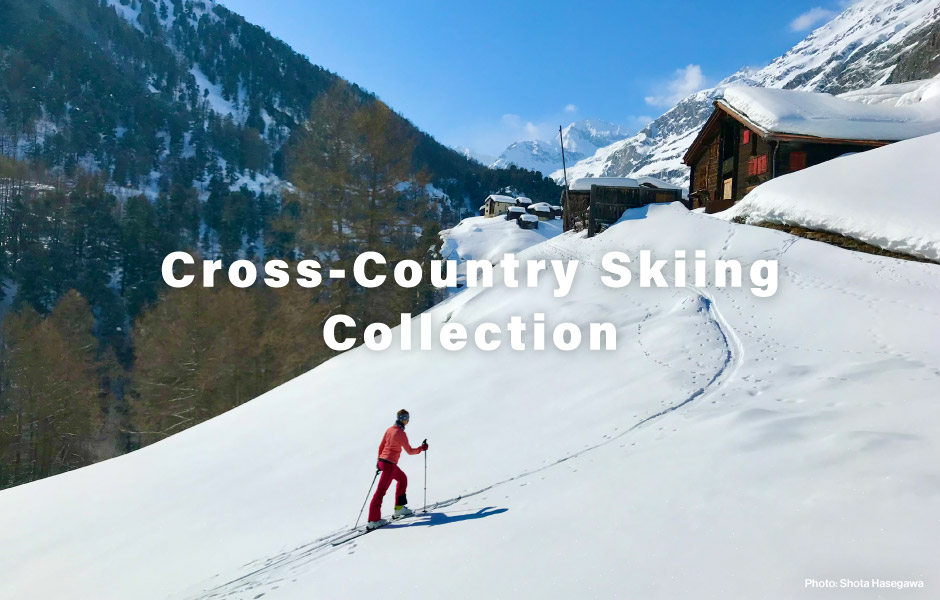
If you’re looking for an aerobic winter activity, then cross-country skiing is a great choice! It’s a nice transition from hiking or snowshoeing and offers a fun way to maintain health through the winter months. It also generates a considerable level of perspiration even in the cold, and while that's great for your health, it makes choosing the right layers a difficult process! On top of that, once you consider the differences between sunny, warm weather and cold, windy conditions, you'll realize that deciding on the perfect layers for this activity can be pretty complex. To simplify that process, we've put together a collection of layering solutions to help you pick the best combination for your cross-country skiing adventures this season.

Even on days when it's below freezing, cross-country skiing is going to make you generate perspiration. When any moisture is left on the skin, it will use energy in the form of body heat to turn into water vapor and evaporate away. That could leave you feeling cold, clammy and can even lead to hypothermia. We don’t want that! By using the right base layers, that perspiration will be absorbed by this next-to-skin layer and spread out to quickly evaporate off of the fabric, not your skin. This will help you stay drier and warmer while moving and at rest.
When deciding on a base layer, go with synthetic ZEO-LINE if quick-drying properties are more important. Choose SUPER MERINO WOOL if heat retention and odor control are in greater demand. Remember though, cotton should be avoided at all costs!
Montbell also offers each base layer in three fabric weights; Light, Middle and Expedition Weight. So which is the best for cross-country skiing? Expedition Weight is designed for incredibly cold temperatures, harsh conditions and more stationary activities. Unless you’re planning on going somewhere extremely frigid, this heavyweight fabric will likely make you overheat. Light and Middle Weight provide a lower degree of heat retention, which makes them just right for cross-country skiing. Choose Light Weight if you "run hot," or plan on going out on warm days or in springtime. Go with Middle Weight if you easily get chilly or plan on skiing in colder temperatures. For more in depth information on base layers, be sure to check our Base Layers Guide.
Pro tip: for additional help with regulating body temperature, look for shirts that have a half zipper. Getting too hot? Simply unzip to let excess heat vent out.
ZEO-LINE Series
-
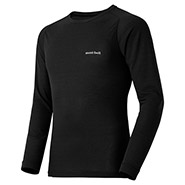
ZEO-LINE Light Weight Round Neck Shirt Men's
Price: €49.00 -

ZEO-LINE Light Weight High Neck Shirt Men's
Price: €55.00 -

ZEO-LINE Middle Weight Round Neck Shirt Men's
Price: €59.00 -
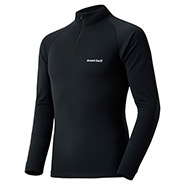
ZEO-LINE Middle Weight High Neck Shirt Men's
Price: €69.00
-
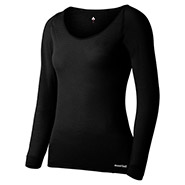
ZEO-LINE Light Weight U-Neck Shirt Women's
Price: €45.00 -
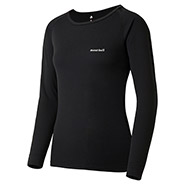
ZEO-LINE Middle Weight Round Neck Shirt Women's
Price: €59.00 -
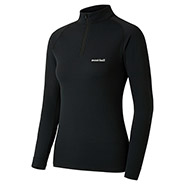
ZEO-LINE Middle Weight High Neck Shirt Women's
Price: €69.00
-
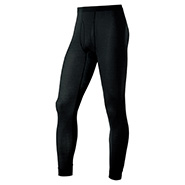
ZEO-LINE Light Weight Tights Men's
Price: €45.00 -

ZEO-LINE Middle Weight Tights Men's
Price: €59.00 -

ZEO-LINE Light Weight Tights Women's
Price: €45.00 -

ZEO-LINE Middle Weight Tights Women's
Price: €59.00
SUPER MERINO WOOL Series
-
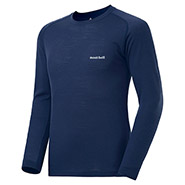
Super Merino Wool Middle Weight Round Neck Shirt Men's
Price: €89.00 -

Super Merino Wool Middle Weight High Neck Shirt Men's
Price: €99.00 -
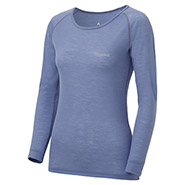
Super Merino Wool Light Weight Round Neck Shirt Women's
Price: €79.00 -
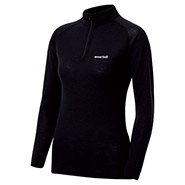
Super Merino Wool Middle Weight High Neck Shirt Women's
Price: €99.00
-

Super Merino Wool Light Weight Tights Men's
Price: €79.00 -
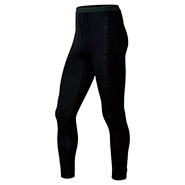
Super Merino Wool Middle Weight Tights Men's
Price: €89.00 -

Super Merino Wool Light Weight Tights Women's
Price: €79.00 -

Super Merino Wool Middle Weight Tights Women's
Price: €89.00

The level of perspiration created while cross-country skiing can be remarkable. With that in mind, go for lightweight, breathable, stretchy layers that will also retain heat, and continue to hold some warmth even when wet. Synthetic insulation, soft shells and fleeces are some of the many options listed below. When packing layers for fair weather, items such as fleece or a breathable synthetic insulator will work great. If it's windy though, a middle layer with wind resistance (soft shell, wind shell, etc.) will be a better option, and a comparatively thicker middle layer will be better suited for colder weather. Also, a jacket (no hood) will be easier to layer under a hard shell, whereas a hooded model will offer coverage and warmth over the head and ears. Vests are versatile and feature a greater degree of breathability and arm mobility while providing coverage over the core.
Fleeces
Fleece is an awesome active insulator. It is highly breathable and will release excess heat as you’re skinning uphill, and it will hold onto some warmth to keep you cozy throughout the day. The synthetic fabric dries quickly, which is important if you do sweat through it. Remember though, unless it has a windproof membrane or lining fabric, a fleece won't be wind-resistant. We recommend using the fleeces below on clear and mild days, or under a wind shell or hard shell in windy conditions.
-

Trail Action Hooded Jacket Men's
Price: €119.00 -
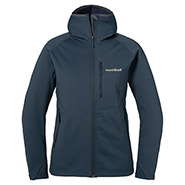
Trail Action Hooded Jacket Women's
Price: €119.00 -
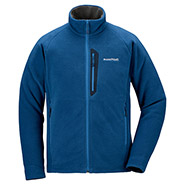
CLIMAPLUS 200 Jacket Men's
Price: €115.00 -

CLIMAPLUS 200 Jacket Women's
Price: €115.00 -
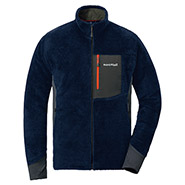
CLIMAAIR Jacket Men's
Price: €119.00
-

CLIMAAIR Jacket Women's
Price: €119.00 -
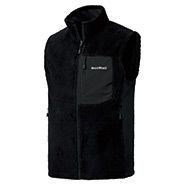
CLIMAAIR Vest Men's
Price: €89.00 -
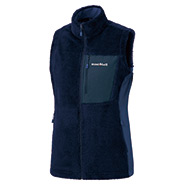
CLIMAAIR Vest Women's
Price: €89.00
Wind Shells
Perhaps less than rain or snow, your biggest concern should be wind chill. Wind shells help block out warmth-sapping wind, hold in a little warmth, provide a degree of breathability and receive a water repellent finish to shed light precipitation. While they aren't waterproof, totally windproof, or indestructible, the models below are ultralight and pocketable. Easily throw one in your pack, and slip it over a fleece or other layer if it starts to get windy.
-
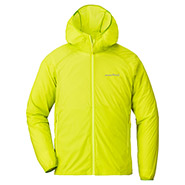
U.L. Stretch Wind Hooded Jacket Men's
Price: €119.00 -

U.L. Stretch Wind Hooded Jacket Women's
Price: €119.00 -
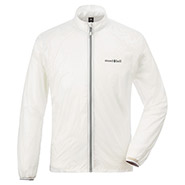
EX Light Wind Jacket Men's
Price: €139.00 -
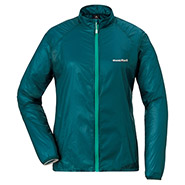
EX Light Wind Jacket Women's
Price: €139.00 -

EX Light Wind Vest Men's
Price: €99.00
Fleece-lined Wind Shell
These models feature a wind-resistant shell great for blustery days. Different from the wind shells shown above though, these models come with a fleece liner to retain additional warmth and assist with moisture management. The result is a versatile layer you can use as a wind shell in windy conditions, and slip under other layers in colder temperatures.
-
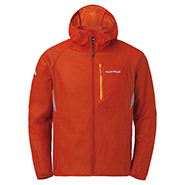
Ultra Light Shell Hooded Jacket Men's
Price: €120.00 -
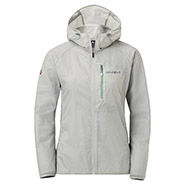
Ultra Light Shell Hooded Jacket Women's
Price: €120.00 -
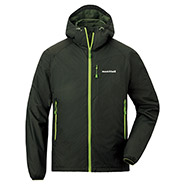
Light Shell Hooded Jacket Men's
Price: €129.00 -
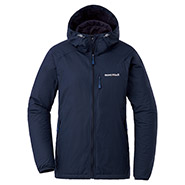
Light Shell Hooded Jacket Women's
Price: €129.00
-

Light Shell Vest Men's
Price: €89.00 -
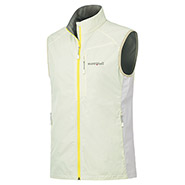
Light Shell Vest Women's
Price: €89.00
Soft Shells
Soft shells are known for being breathable, stretchy and wind-resistant while providing a degree of heat retention and water repellency. It's this versatility that makes them equally as suited for both sunny days and cold, windy conditions. While not specifically designed for cross-country skiing, the below models can be easily adapted. The Crag uses a lightweight, 4-way stretch fabric that sheds wind and light precipitation while holding on to a bit of warmth. The Climapro 200 Hooded Jackets feature the same 4-way stretch fabric, but with a brushed lining for better heat retention. The Cross Runner Jacket combines a wind-resistant fabric on the front with a soft, breathable and stretchy fabric on the back. This combination will help block out headwinds while venting excess heat and moisture from the back.
-
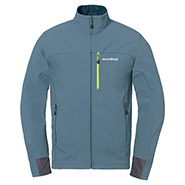
Crag Jacket Men's
Price: €160.00 -

Crag Jacket Women's
Price: €160.00 -

CLIMAPRO 200 Hooded Jacket Men's
Price: €179.00 -

CLIMAPRO 200 Hooded Jacket Women's
Price: €179.00
-

Cross Runner Jacket Men's
Price: €150.00 -
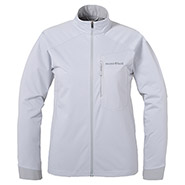
Cross Runner Jacket Women's
Price: €150.00
Synthetic Insulation
Synthetic insulation provides similar performance to fleece while achieving a lighter weight. The polyester fill won't absorb moisture and continues offering some warmth even when wet to deliver versatility that you can count on even in changing weather or when breaking a sweat. The U.L. Thermawrap is the most breathable option and better suited for fair weather. The Thermawrap Pro features a wind-blocking 20-denier face fabric which is more heat-retaining and a little less breathable, making this parka optimal for windier and colder days.
-
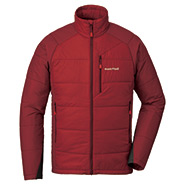
U.L. Thermawrap Jacket Men's
Price: €199.00 -
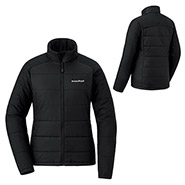
U.L. Thermawrap Jacket Women's
Price: €199.00 -
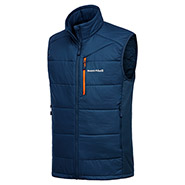
U.L. Thermawrap Vest Men's
Price: €145.00 -

U.L. Thermawrap Vest Women's
Price: €145.00
-

Thermawrap Pro Men's
Price: €249.00 -
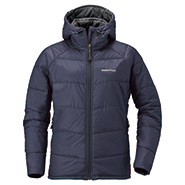
Thermawrap Pro Women's
Price: €249.00
Down Insulation
We've also included down garments to this section. Rather than use down while actively skiing, use it as warmth during stationary moments such as lunch breaks or while packing up gear at your car. Your body is no longer producing the same amount of heat and will cool down rapidly. One of these parkas will help retain your body heat to ensure you stay warm and comfortable while resting.
-

Permafrost Light Down Parka Men's
Price: €399.00 -
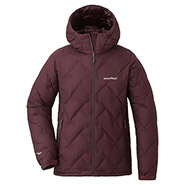
Permafrost Light Down Parka Women's
Price: €399.00 -
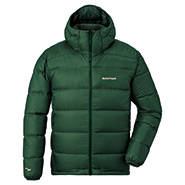
Alpine Light Down Parka Men's
Price: €309.00 -
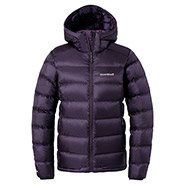
Alpine Light Down Parka Women's
Price: €309.00
Pants
Pants are an equally important part of the layering equation. With their lightweight and stretchy fabric, the Trail Action Tights, Cliff Pants and Guide Pants are best worn when the sun is out and it's not so cold. Is the wind picking up? If that's the case, go with the Cross Runner Pants, which have a wind-resistant front and highly stretchy, breathable back fabric. The ultralight Dynamo Wind Pants easily fit into any pack, and unfurl to block out wind and retain a bit of warmth. Remember though, they are ultra-thin, so caution needs to be taken while around tree branches or when using metal-edge skis. For those colder days, choose the Thermal Guide or O.D. Pants. These models feature a brushed interior fabric to offer a bit more warmth.
-

Trail Action Tights Men's
Price: €89.00 -
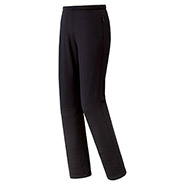
Trail Action Tights Women's
Price: €89.00
-
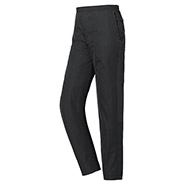
Cross Runner Pants Men's
Price: €140.00 -

Cross Runner Pants Women's
Price: €140.00 -

Dynamo Wind Pants Men's
Price: €99.00 -

Dynamo Wind Pants Women's
Price: €99.00

While blue skies and perfect snow are always welcome, conditions can change quickly. To respond to that, bring a hard shell with a waterproof breathable membrane that will brush aside snow and offer protection from the wind. Along with that, a hard shell will help block out rain if conditions do take a drastic change for the worse.
Shells
-

Dyna Action Parka Men's
Price: €490.00 -

Pumori Parka Women's
Price: €490.00

Building the perfect layering system is all for naught if your hands and head are left feeling cold. So be sure to bring along some headwear and gloves! Try to avoid chunky knit items since they more easily catch snow. Headwear and gloves made of smoother, soft shell-like materials are better at shedding snow. When heading out, we recommend bringing along multiple sets of gloves and headwear because you're likely to sweat through them. Having dry spares will be a welcome comfort on the trail, during a lunch break and while on the way home.
HEADWEAR
-
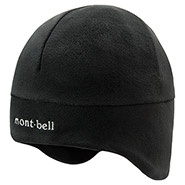
CHAMEECE Ear Warmer Watch Cap
Price: €29.00 -
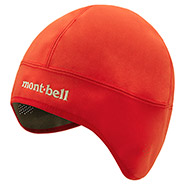
Alpine Inner Cap
Price: €45.00 -

CLIMAPRO Watch Cap
Price: €30.00
-

CHAMEECE Headband
Price: €19.00 -

STRETCH CLIMAPLUS Headband
Price: €19.00 -
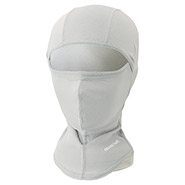
ZEO-LINE Light Weight Balaclava
Price: €28.00 -
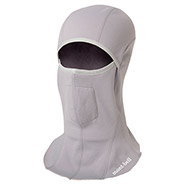
Trail Action Balaclava
Price: €59.00
GLOVES
-
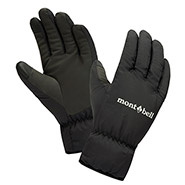
Light Winter Trekking Gloves Men's
Price: €49.00 -

Light Winter Trekking Gloves Women's
Price: €49.00 -
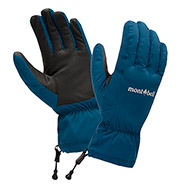
Winter Trekking Gloves Men's
Price: €59.00 -

Winter Trekking Gloves Women's
Price: €59.00
-

WINDSTOPPER Light Trekking Gloves
Price: €45.00 -
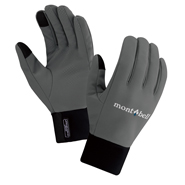
WINDSTOPPER Trekking Gloves Men's
Price: €55.00 -

WINDSTOPPER Trekking Gloves Women's
Price: €55.00 -
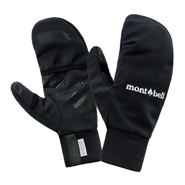
WINDSTOPPER Trekking Mittens
Price: €55.00

While we don’t make skis, we make tons of other gear to help you enjoy your cross-country skiing adventures that much more.
Backpacks & Lumbar Packs
Being able to carry extra layers, snacks and water is going to be necessary, and you'll need a backpack or lumbar pack to do it. Although designed for trail running, the Cross Runner Pack will allow for all of the mobility needed to propel yourself along the trail. Be aware that water stored in the shoulder pockets may freeze if the temperature is below freezing. Also, the Cross Runner is made with an ultralight fabric, so be careful of tree branches while skiing in forests. Our winter specific, lower volume Landner Packs are also an excellent option with various features specifically made for the winter backcountry. These packs are hydration bladder compatible to help you stay hydrated while on the move. If you're packing super light with just the bare necessities (i.e. UL wind shell, small snacks, etc.) and will only be out for a short time on a groomed trail, then a lumbar pack may be all you need.
-
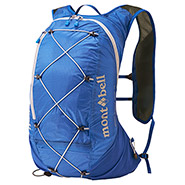
Cross Runner Pack 15
Price: €135.00 -
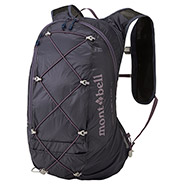
Cross Runner Pack 15 Women's
Price: €135.00 -

Fall Line Pack 22
Price: €215.00
-

Trail Lumbar Pack 7
Price: €65.00 -
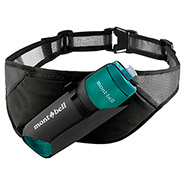
Waist Bottle Cage
Price: €48.00 -
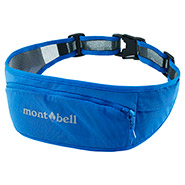
Cross Runner Pouch M
Price: €49.00
Bottles
Hot cocoa on a break or soup for lunch will be a welcome treat on cold days. Hydration is equally important in cold weather because it is harder to tell if you are becoming dehydrated (cold and dry weather makes it difficult to feel your perspiration). If possible, keep your water hydration bladder insulated to prevent it from freezing.
*Pro tip: blow air into the hose after drinking to force the water back into the main reservoir so your drinking tube doesn't freeze.
-
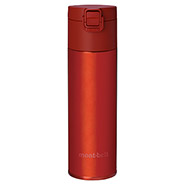
Alpine Thermo Bottle Active 0.5L
Price: €50.00 -

Trail Water Pack Thermo Cover 2.0L
Price: €20.00
Coffee Time
Planning to make some coffee? The long-time fan favorite O.D. Compact Dripper needs no explanation. Attach one of our gas canister covers prevent moisture condensation in cold conditions and promote efficient use of fuel, helping to keep your stove burning. Bring along a sheet for a dry area to set things down.
-
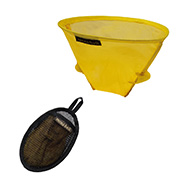
O.D. Compact Dripper 2
Price: €28.00 -

Gas Canister Sock 110
Price: €16.00 -

Gas Canister Sock 250
Price: €17.00
Seats
Even with a hard shell, sitting on snow can still be cold and leave you feeling soggy and with literally dampened spirits. Bring a foam cushion as a barrier between you and the snow to keep yourself dry and your spirits high.
-
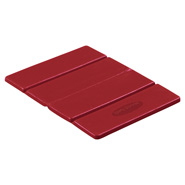
Foam Cushion
Price: €9.50
